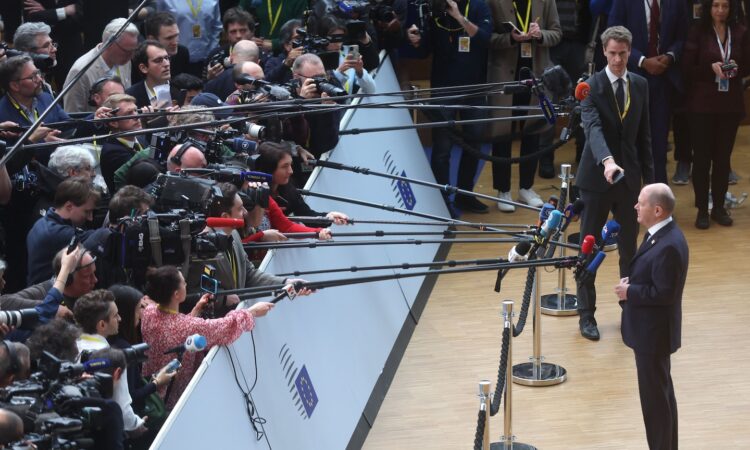
European Union leaders will discuss a proposal Thursday to use profits generated by immobilized assets to help Kyiv. At a time when U.S. funding is stalled and Ukraine is desperate, the proposal could offer about $3 billion a year over several years, mostly for weapons.
While the plan, if approved, would certainly help Ukraine, even its backers struggled to present it as a major victory. Top E.U. diplomat Josep Borrell said $3 billion a year is “not extraordinary” but also “not negligible.”
The saga of mobilizing those frozen assets to help Ukraine in some ways captures the mood in Europe, as bold pronouncements about stopping Putin and standing with Ukraine until victory come up against the grim realities of the war.
Allies have in recent weeks been rattled by dire reports from the front line and worrying signals from the United States, where funding for Ukraine is stalled and Republican presidential candidate Donald Trump is once again railing against NATO.
As leaders arrived in Brussels on Thursday, there seemed to be broad agreement that the region needs to do more to prevent Russian President Vladimir Putin from winning, but little confidence that Europe can actually thwart his plans.
“Of course I would love to invest in reconstruction, but it is a bit pointless to invest in reconstruction if we risk losing the country,” ventured Belgian Prime Minister Alexander De Croo.
In 2022, allies decided to seize more than $300 billion in Russian central bank assets held outside the country, including more than $200 billion in the European Union.
From the outset, some member states wanted to use all the assets to help Ukraine. Others were wary, raising question about the legality and long-term consequences of such a move.
Some officials, diplomats and experts worry, for instance, that seizing Russian assets could stop sovereign wealth funds, investors or central banks from investing in European assets. The European Central Bank has warned that seizing assets could undermine the euro. And there are concerns in some quarters that Moscow will retaliate against European business interests in Russia.
Talks about what to do with the assets moved in fits and starts for many months, but seemed to gain momentum as U.S. aid for Ukraine stalled.
In the fall, senior U.S. officials stepped up their efforts to lead Western governments to use hundreds of billions of dollars of frozen Russian central bank reserves to help Ukraine.
Last month, Treasury Secretary Janet L. Yellen offered strong support for the idea of liquidating roughly $300 billion in frozen assets and using them.
“It is necessary and urgent for our coalition to find a way to unlock the value of these immobilized assets to support Ukraine’s continued resistance and long-term reconstruction,” Yellen said in São Paulo, Brazil, according to the Associated Press.
“I believe there is a strong international law, economic, and moral case for moving forward,” she said. “This would be a decisive response to Russia’s unprecedented threat to global stability.”
For now, Europe is only looking at tapping the windfall profits. Since much of the assets are held by Euroclear, a Belgium-based financial services company, Belgian authorities helped make the case to use some but not all of the profits without touching the assets themselves — at least for now.
Under the plan, most of the profits generated by frozen assets would go to Ukraine, but some would be left as a “buffer” to fund legal battles as Russia tries to recover the money, Belgian and E.U. officials said.
This year, 90 percent of the money would go to weapons and 10 percent to boost Ukraine’s weapons industry. Ukraine could get funds by the summer, officials suggested. But with ammunition and weapons in short supply, it is not clear exactly what Kyiv will acquire, or when.
On Thursday, Estonian Prime Minister Kaja Kallas called the proposal a “first step.”
For Russia, of course, it is a step too far, with Foreign Ministry spokeswoman Maria Zakharova calling the plan “outright banditry and theft.”
“These actions are a gross and unprecedented violation of basic international norms,” she said, according to Russian media. “We said that we would respond, and so we shall.”






